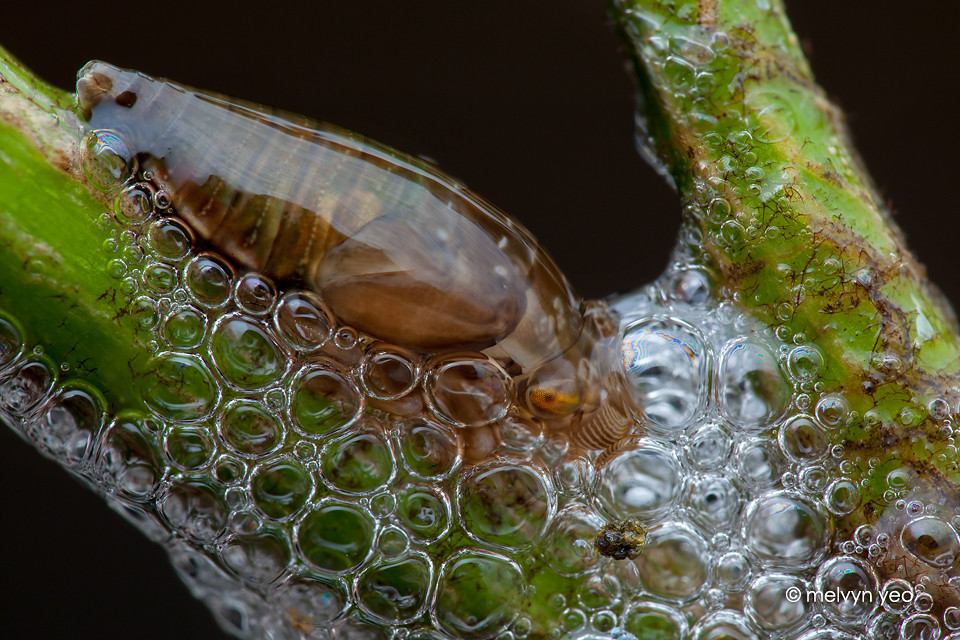HOME | DD
 melvynyeo — Spittlebug
melvynyeo — Spittlebug

Published: 2014-02-02 16:01:41 +0000 UTC; Views: 6329; Favourites: 145; Downloads: 66
Redirect to original
Description
Taken at night in Singapore.Quote from en.wikipedia.org/wiki/Froghopp…
The froghoppers, or the superfamily Cercopoidea, are a group of Hemipteran insects, in the suborder Auchenorrhyncha. These families are best known for the nymph stage, which produces a cover of frothed-up plant sap resembling spit; the nymphs are therefore commonly known as spittlebugs and their froth as cuckoo spit, frog spit or snake spit. The final family in the group, Machaerotidae, is known as the tube spittlebugs because the nymphs live in calcareous tubes, rather than producing froth as in the other families.
The froth serves a number of purposes. It hides the nymph from the view of predators and parasites, it insulates against heat and cold, thus providing thermal control and also moisture control. Without the froth the insect would quickly dry up. The nymphs pierce plants and suck sap causing very little damage, much of the filtered fluids go into the production of the froth, which has an acrid taste, deterring predators. A few species are serious agricultural pests.
Adult froghoppers jump from plant to plant; some species can jump up to 70 cm vertically: a more impressive performance relative to body weight than fleas. The froghopper can accelerate at 4,000 m/s2 over 2mm as it jumps (experiencing over 400 gs of acceleration).[citation needed] Spittlebugs can jump 100 times their length. Many species resemble leafhoppers, but can be distinguished by the possession of only a few stout spines on the hind tibia, where leafhoppers have a series of small spines. Members of the family Machaerotidae greatly resemble treehoppers, due to a large thoracic spine, but the spine in machaerotids is an enlargement of the scutellum, where treehoppers have the pronotum enlarged. Members of the family Clastopteridae have their wings modified to form false heads at the tail end, an anti-predator adaptation. Many adult Cercopidae can bleed reflexively from their tarsi, and the hemolymph appears to be distasteful; they are often aposematically colored.
Related content
Comments: 25

👍: 0 ⏩: 0

Excellent information and beautiful photo. Funny thing, i didn't thought about "spit" when seeing it but more to a bug enjoying a hot tub ^^
👍: 0 ⏩: 1

A gorgeous photo! You have an astonishing gallery!
👍: 0 ⏩: 1






































